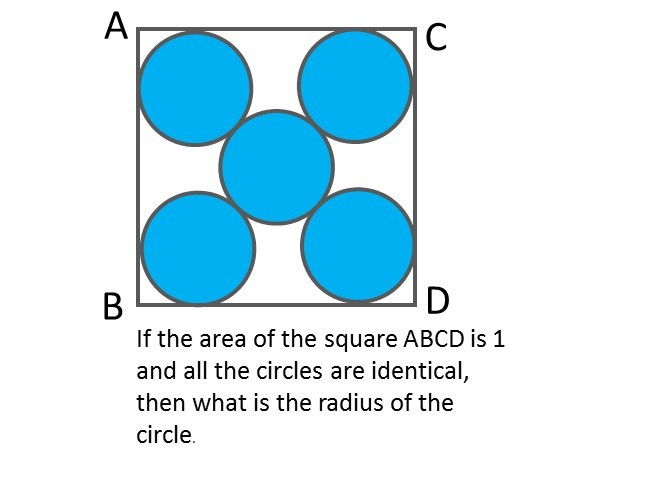This section requires Javascript.
You are seeing this because something didn't load right. We suggest you, (a) try
refreshing the page, (b) enabling javascript if it is disabled on your browser and,
finally, (c)
loading the
non-javascript version of this page
. We're sorry about the hassle.
1 solution
By drawing in multiple radii and utilizing the Pythagorean Theorem, we can see that the side length of the square is equal to
(
2
2
+
2
)
r
. Because the square has area 1, we know its side length is 1. If
1
=
(
2
2
+
2
)
r
, then
r
=
2
2
+
2
1
. Approximating
2
as 1.4, we can calculate
r
as being
4
.
8
1
=
0
.
2
0
8
. Plugging this into a calculator, instead, we get a more accurate answer of
0
.
2
0
7
.
